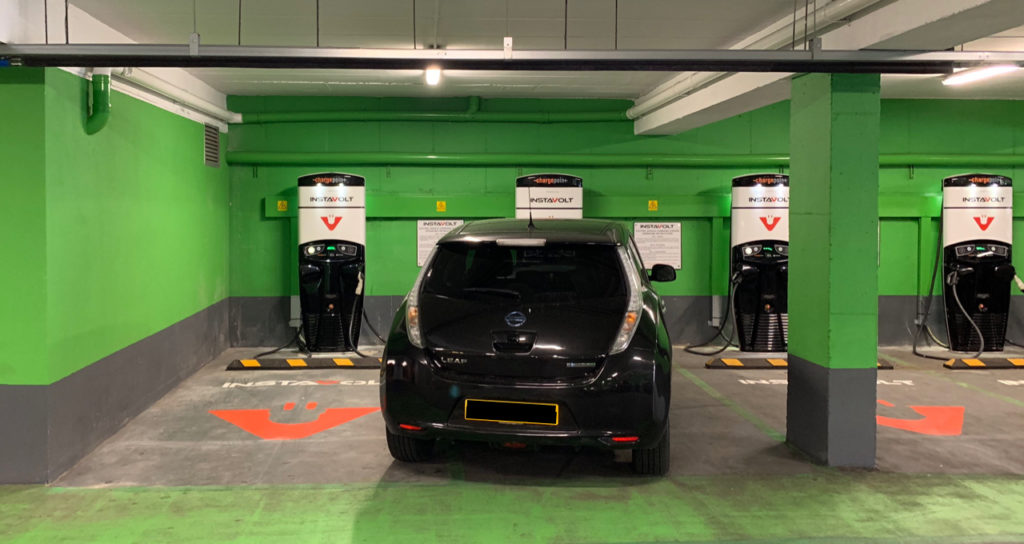
We’re just heading into our second week of our LEAF ownership. We still don’t have the 7kW charger installed at home so we’re charging up every couple of days at the Instavolt 50kW rapid chargers in town.
To recap, we have a 3 year old used Nissan LEAF with a 30kW battery which still has 12 out of 12 bars of capacity.
After our first week with the car, we are getting a feel for the realistic range, driving conditions that affect it, and a different way of thinking about travel.
We’re getting about 80-100 miles of everyday driving per full charge. This means we get two days of school runs (4x journeys of ~9 miles each way) plus local trips for shopping etc. It’s very hilly where we are, and the car copes fine with this, although it plays havoc with the range estimation. You can “lose” 10 miles going up a hill for 1/2 mile, but then “gain” a lot of it back over the rest of the journey. We’re talking a mix of 30-40mph driving and 60mph driving on country roads.
Motorways are a bit different. Today my daughter and I decided to see how far we could get on a single charge from here to Birmingham to try out some guitars in a guitar shop there. The journey is about 65mi from home to the store.
On the motorway portion (the M5), which is most of it, I got the car to 70mph and put cruise control on, and we basically sat at 70 the whole way. By the time we got to Franckley Services which has the last Ecotricity rapid charger before the destination, we were down to 12% battery and the car said we had 8 miles range left. So we got about 60 miles range out of ~90% of a battery charge when driving on the motorway at 70mph in good conditions.
This is not stellar. However the journey was stress-free at that speed and it was nice to have a break. Coffees + snacks easily paid for by the reduced fuel costs.
On the way back I topped up the battery to full at the same service station, for science — to see if the usage would be the same on the return journey. Most of the journey North to Birmingham felt very much uphill.
Long story short, we got home with 36% charge left, for exactly the same route and speed.
One lesson I got from this — a tale of trying to use a car with short range for long range trips — is to charge up early and often. It was risky waiting for the last charging opportunity, and if the charger had malfunctioned we would have been stuck. Rapid charging for just a small time adds useful range, and costs peanuts.
The total cost for recharging from 12% to 98% and then from 90% to 98% was… £7 (and that’s at the “rip off” price of 30p per kWh which is ~3x what you pay at home). For about 130 miles of driving with zero emissions. It’s a rare thing in this world… to save money for doing something good. We’re used to paying over the odds for the privilege of buying sustainable, organic or fair trade products and services.

Two rapid-charging observations:
- Instavolt’s system is how it should be. Contactless payment tap at start and end. Ecotricity’s is overcomplicated, requiring an app, scanning a QR code, re-entering CVV number every time and a great many taps. It gives you status updates in the app — kWh delivered and cost — but maddeningly, not your battery charge % which is the only useful info you could want when you leave the car charging (it shows this % on the charging point screen!).
- Saying this, I had my first experience with a failed charging station today. One of the four Instavolt charging points in my town just shut down and lost all power after charging started, which meant a long call to their support to report the problem and make sure I was refunded as it instantly debits £5 on your first contactless tap.
